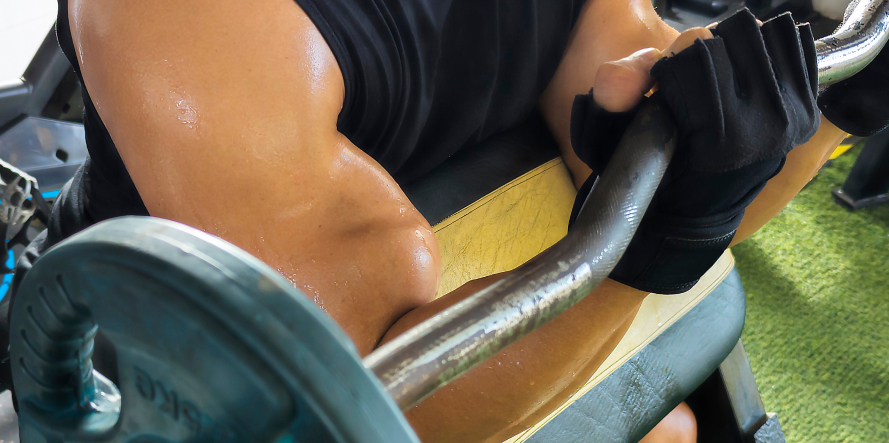A biceps tendon rupture at the elbow is a relatively uncommon injury that occurs when the tendon connecting the biceps muscle to the forearm bone (the radius) undergoes a complete or partial tear near the elbow joint. Although this type of injury is less common than a biceps tendon rupture at the shoulder, it can significantly impact arm function and a person’s quality of life.
The biceps brachii is a muscle on the front of the upper arm, running between the shoulder and the elbow. It has two tendons: the proximal tendon that attaches the biceps to the shoulder and the distal tendon that attaches the biceps to the elbow (specifically the radial tuberosity on the radius bone). The distal biceps tendon plays a crucial role in elbow flexion and forearm supination. When the distal biceps tendon ruptures, it causes:
Distal biceps tendon ruptures typically result from a sudden, forceful contraction of the biceps muscle, especially when the elbow is extended against resistance. This can occur during activities like weightlifting, strong supination of the forearm, or direct trauma to the elbow.
Individuals involved in weightlifting, contact sports, or jobs requiring repetitive manual labor are at higher risk of experiencing a biceps tendon rupture at the elbow. This is primarily due to the repetitive stress and potential for sudden forceful movements these activities place on the biceps tendon. Men age 30 years or older, are most likely to tear the distal biceps tendon.
Additional risk factors for distal biceps tendon tear include:
The most common symptoms of a rupture of the distal portion of the biceps tendon include a sudden and painful “pop” or “click” sensation at the moment of rupture, intense pain, swelling, weakness and bruising (ecchymosis) in the front of the elbow and forearm.
Following an elbow injury, limitations in joint movement and decreased strength in elbow flexion and supination can occur.
Specifically, the reduced supination strength often becomes noticeable 7-10 days after the injury. This stiffness can impact daily activities and may be caused by factors like soft tissue contractures or bony changes around the joint.
Additional symptoms include a bulge in the upper arm caused by the retraction of the muscle and the presence of a palpable gap in front of the elbow due to the absence of the tendon.
A thorough medical evaluation, including a detailed medical history, physical examination (including the Hook test), and imaging tests like ultrasound or MRI, is crucial for accurately diagnosing tendon injuries and determining if the injury is a complete or partial rupture. While X-rays are not typically used for this purpose, these other methods provide more detailed information about the extent and nature of the injury.

The biceps tendon tear at the elbow is mainly treated surgically, except for specific cases where conservative treatment is appropriate.
The conservative (non-surgical) treatment is often favored for partial tears, elderly patients, or those with low functional demands from the upper limb.
Nonsurgical treatment focuses on relieving pain and maintaining as much arm function as possible. Treatment recommendations may include:
However, surgery is usually recommended for complete tears, especially in patients who want to restore full function, strength, and range of motion in the elbow and upper limb. Non-surgical treatment might be an option for partial tears or in patients with lower functional demands. The surgery is typically performed within two to three weeks after the injury. Early intervention helps:
The surgical procedure can be carried out using two surgical techniques, both aimed at reattaching the torn distal biceps tendon to the radius bone:
Both techniques aim to securely fix the tendon to the bone, enabling it to heal properly and restore arm strength and function.
Upper Limb Orthopedic Surgeon, Dr. Panagiotis Pantos has extensive experience in successfully restoring this type of injury.
His goal is to ensure full recovery of elbow functionality, which includes:
Fill in your details below and we will contact you immediately!
WIN THE
MATCH POINT IN THE RACE
OF YOUR HEALTH!